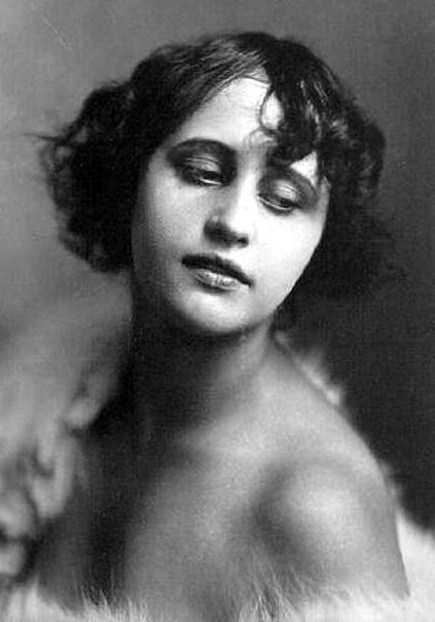Vera Kholodnaya (Vera Kholodnaya)

Actress. Nicknamed “The Queen of the Screen”, she was Russia’s first female movie star. Although most of her films are lost, her haunting beauty and untimely death have made her a figure of enduring interest. Vera Vasilyevna Levchenko was born in Poltava, Ukraine, and largely raised by her grandmother in Moscow. At 17 she married Vladimir Kholodny, a professional auto racer, but when he was conscripted into the Russian Army at the start of World War I she was left alone with a daughter to support. Having secretly harbored ambitions of becoming an actress, she began appearing in bit parts at the A.A. Khanzhonkov movie studio in late 1914. Director Yevgeni Bauer spotted the grey-eyed, raven-haired neophyte among the extras and gambled on giving her the female lead in “Song of Triumphant Love” (1915), an adaptation of a Turgenev story; it made her a star overnight. For the next three years Kholodnaya was Russia’s biggest box office draw, playing romantic heroines who sometimes falteringly steered their way around the world’s temptations. Colleagues attributed her popularity to a magnetic screen presence and classical features that photographed well from any angle; her trademark gesture was a worldly, enigmatic gaze that invited viewers to read their own feelings into her performances. “My eyes are my bread”, she asserted. Of her estimated 80 films only five survive: “Children of the Age” (1915), “The Mirages” (1916), “A Life for a Life” (1916), “The Living Corpse” (adapted from Tolstoy’s play, 1918), and “Be Silent, My Sorrow, Be Silent” (1918). In the chaotic months after the 1917 Revolution, stage director Konstantin Stanislavsky invited Kholodnaya to join his Moscow Art Theatre, but she remained faithful to producer Khanzhonkov and evacuated with his company to Odessa in February 1919. Two weeks later she died in the Spanish Influenza epidemic that was ravaging the city. She was 25. Rumors that she was poisoned, either by a romantic rival or by the Bolsheviks, are still part of her legend. Thousands of grief-stricken fans attended her funeral, which was recorded for the newsreels; ironically, this footage has received wider circulation than any of her extant films. She was interred at Odessa’s First Christian Cemetery. As a leading pop culture symbol of the late Czarist era, Kholodnaya was discredited and her work banned by the new Soviet government. When the First Christian Cemetery was razed in 1931, the authorities ignored her family’s pleas to move her remains to Moscow and her gravesite was unceremoniously destroyed. She remained persona non grata with the Communists even after the international success of Nikita Mikhalkov’s feature “Slave of Love” (1976), a fictionalized account of her tragic last days. Following the fall of the USSR in 1991, historians (especially in the Ukraine) took steps to restore Kholodnaya’s long-neglected memory. A Ukrainian postage stamp was issued to commemorate her centenary in 1993, and in 2003 a life-size bronze statue of the actress was dedicated near her last home at Odessa’s Cathedral Square. (bio by: Bobb Edwards)
Born
- August, 30, 1893
Died
- February, 02, 1919
Cemetery
- First Christian Cemetery (Defunct)
- Ukraine

